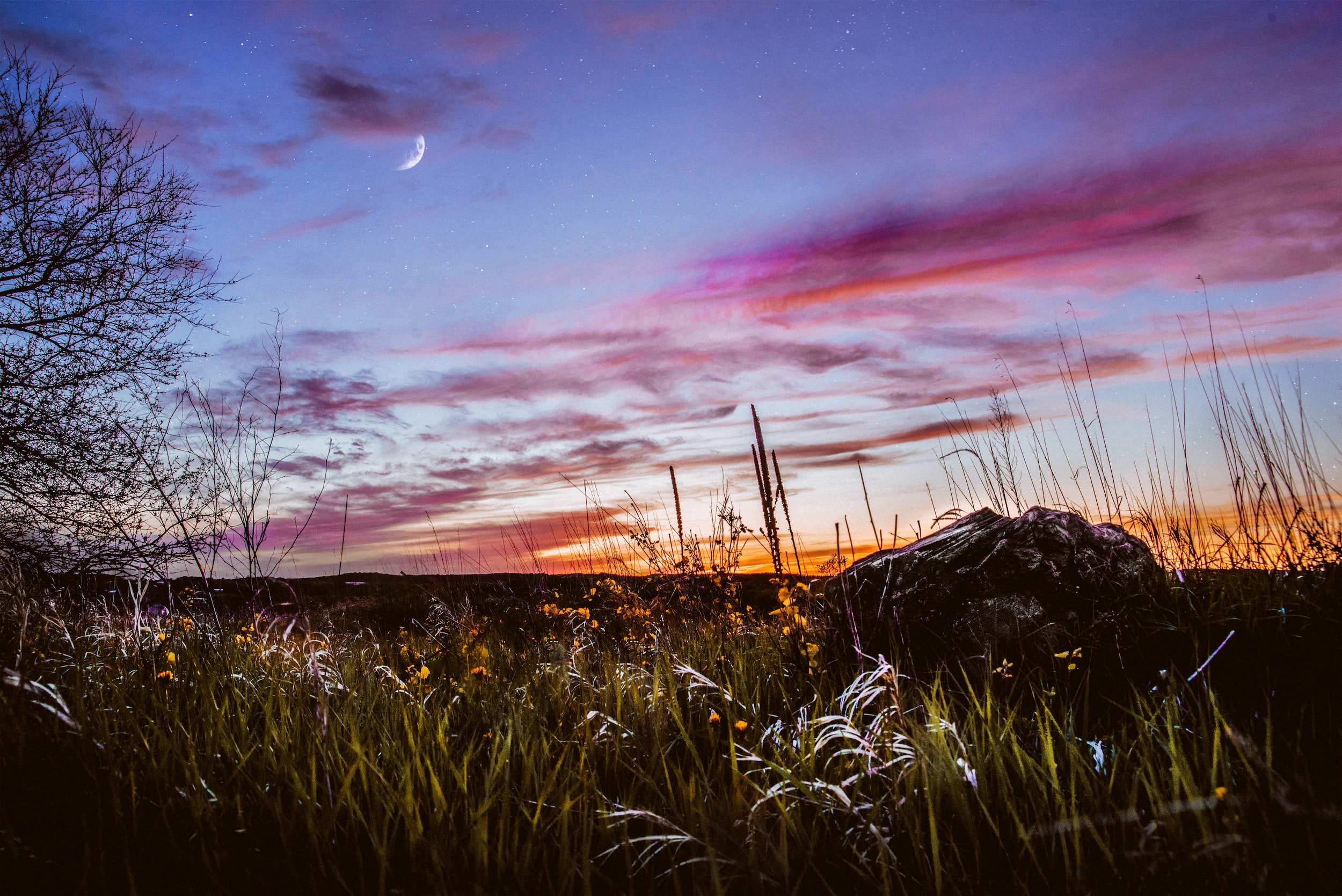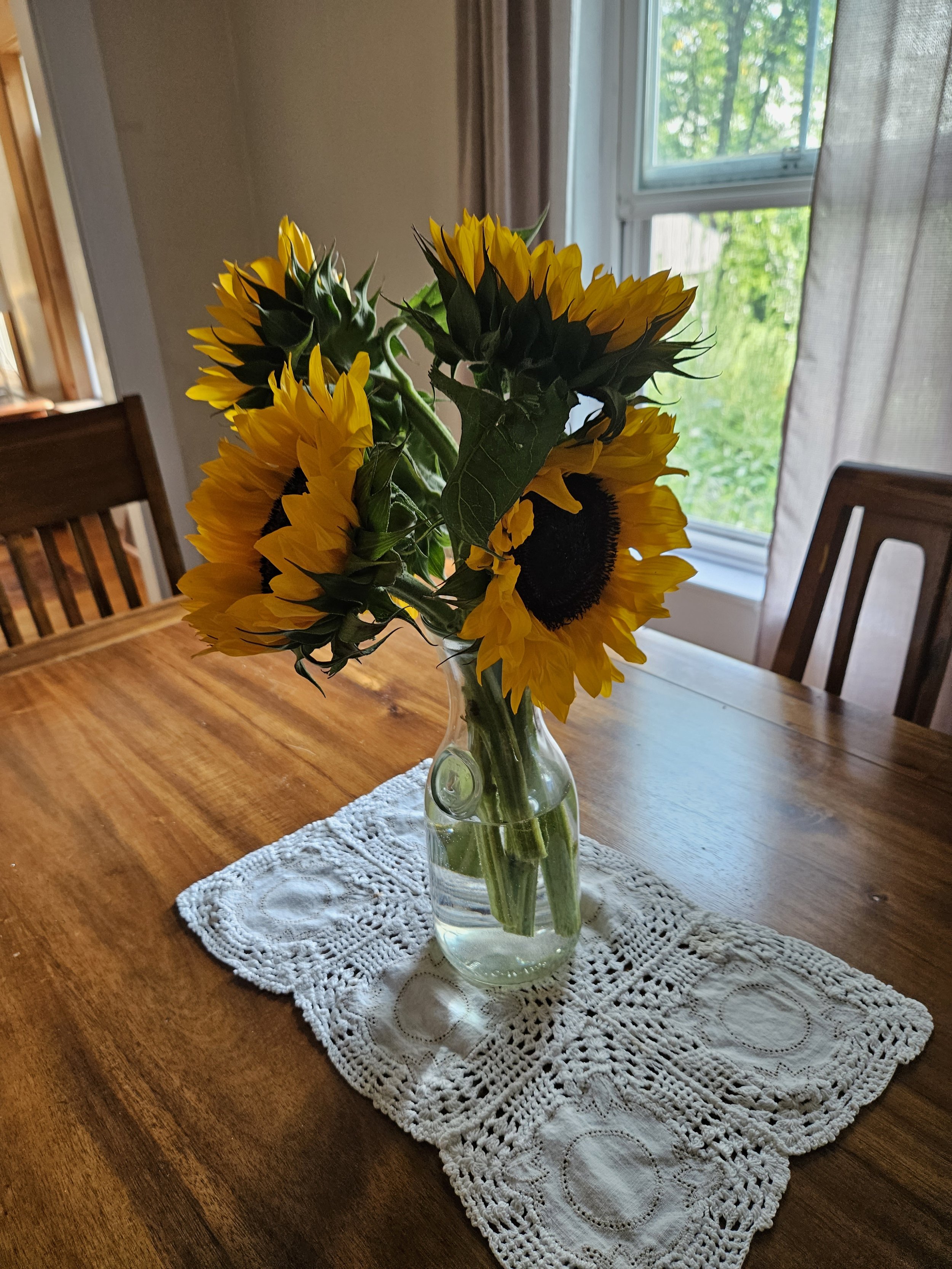Lughnasadh: A Time for Reflection and Celebration
This post may include affiliate links* and I may earn a small commission from qualifying purchases. Mabon House only features products that I believe in and use myself or that I believe my readers would enjoy. Thank you!
In the ancient Celtic calendar, Lughnasadh, also known as Lammas, holds a special place as one of the eight sabbat holidays that make up the Wheel of the Year. Celebrated on August 1st in the Northern Hemisphere, this holiday marks the beginning of the harvest season and is associated with the Celtic god Lugh. In this post, we’ll explore the history of Lughnasadh/Lammas, its modern interpretation, and why it serves as an ideal time for personal reflection within the Wheel of the Year.
A History of Lughnasadh
Lughnasadh, which means "the commemoration of Lugh," traces its roots back to ancient Ireland and the Celtic people. It was named in honor of Lugh, the Irish sun god, who was revered for his skills in many areas such as craftsmanship, poetry, and warriorship. The festival served as a way to honor Lugh's divine presence and to express gratitude for the abundant harvest that sustained the community.
During Lughnasadh, people would come together to participate in various festivities. These activities often included athletic competitions, feasting, dancing, storytelling, and crafting intricate corn dollies. The festival was a time of joyous celebration, community bonding, and giving thanks for the blessings of the land. Lughnasadh was also a time when the first grain harvest occurred and as such grain and bread play a prominent role in the symbolism of the holiday. In her book Modern Guide to Witchcraft, author Skye Alexander highlights the ongoing popular tradition of harvest festivals that still occur today in many rural places.
Modern Interpretation of Lughnasadh
In contemporary times, Lughnasadh continues to hold significance for many individuals who follow pagan, Wiccan, or other earth-based spiritual paths. Although the original agricultural context may not be as prominent in our modern lives, the essence of Lughnasadh and the first harvest remains relevant. It is a time to recognize and appreciate the fruits of our labor, both literally and metaphorically.
Lughnasadh serves as a reminder to pause and reflect on the accomplishments and personal growth we have experienced thus far in the year. It is an opportunity to express gratitude for the abundance in our lives and the relationships that nourish us. Many people celebrate by sharing a meal with loved ones, engaging in creative endeavors, or spending time in nature, connecting with the Earth's bountiful energy.
Lughnasadh as a Time for Personal Reflection
Within the Wheel of the Year, Lughnasadh occupies a unique space as a time of transition. It marks the shift from the vibrant energy of summer to the gradual descent into autumn. As the days begin to shorten, it is a natural moment to turn inward and reflect on our personal journeys.
Lughnasadh invites us to evaluate the goals we set at the beginning of the year and assess our progress. It is an ideal time to review our intentions, projects, and aspirations, allowing us to course-correct if needed. Reflecting on the seeds we have planted, both literally and metaphorically, we can assess what has come to fruition and what requires further attention.
Additionally, Lughnasadh offers an opportunity for introspection and self-care. As we celebrate the abundance of the harvest, we can also acknowledge our own personal growth and achievements. This reflection allows us to honor our own unique talents and strengths, recognizing the ways in which we contribute to the greater tapestry of life.
Lughnasadh is a festival deeply rooted in ancient Celtic traditions, and it continues to resonate with many individuals today. As we honor the god Lugh and celebrate the harvest season, we also embark on a journey of personal reflection. Lughnasadh invites us to appreciate the abundance in our lives, evaluate our progress, and nurture our personal growth.
In this modern age, where the pace of life can be hectic and overwhelming, the significance of Lughnasadh remains crucial. pausing to reflect during Lughnasadh, we reconnect with the cycles of nature and our own inner rhythms. It is a time to slow down, find balance, and recharge our spirits. Through personal reflection, we can gain clarity, set new intentions, and align ourselves with the changing energies of the season.
As we celebrate Lughnasadh/Lammas, let us embrace the spirit of gratitude, acknowledging the abundance that surrounds us and within us. May we take this opportunity to honor our journey, express gratitude for the blessings in our lives, and cultivate a deeper connection with ourselves, our communities, and the natural world. By embracing the wisdom of Lughnasadh, we can find inspiration, renewal, and a sense of purpose as we continue to navigate the Wheel of the Year.
More About Lughnasadh & The Wheel of the Year
Follow the Mabon House adventures
Cross-Quarter Days and The Wheel of the Year
Disclaimer: This website uses affiliate links, meaning: at no additional cost to you, I earn a small commission if you click-through and make a purchase. If you’d prefer to support local retailers in your area, independent booksellers can often order specific books for you and have them delivered to the store for pick up, for the same price as ordering online.
The Wheel of the Year is divided into eight seasonal celebrations. Four of these seasons (Yule, Ostara, Litha and Mabon) align with either a solstice or equinox. The other four seasonal celebrations (Samhain, Imbolc, Beltane and Lughnasadh) are midpoints within a season, also known as a cross-quarter day. These four days are rooted in ancient Irish Celtic culture as seasonal fire festivals. Today, the cross-quarter days offer an opportunity to pause reflect, set intentions, and give thanks.
Early Origins of the Cross-Quarter Days
Seasonal observances are largely universal in ancient cultures. Astrology, lunar phases and seasonal changes all served as a guide for ancient communities. Planting, harvesting and hunting were all done in cadence with these monthly and seasonal changes happening throughout the year.
In Irish lore, cross-quarter days are also known as the ancient Celtic fire festivals, as bonfires figure prominently in the celebration of each one. It’s important to note that according to Irish mythology, the ancient Irish Celts marked the start of each season with these fire festivals, rather than viewing them as a midpoint for each season. As Christianity spread throughout Europe in the early Middle Ages the traditional fire festivals/ cross-quarter days were incorporated into the Church calendar as various saints days. As late as the 19th Century, cross-quarter days were when British and Irish tradition servants hired, rents due and school terms started.
Cross Quarter Days and The wheel of the year
Within the Wheel of the Year, cross-quarter days each fall exactly at the midpoint (cross) of each season (quarter). Samhain is the midpoint between Autumn and Winter; Imbolc is the midpoint between Winter and Spring; Beltane is the midpoint between spring and summer; Lughnasadh is the midpoint between summer and autumn. Today, modern pagans and those following a nature based spiritual path observe these seasonal midpoints in a variety of ways, including festivals, parties and feasting.
One of the reasons I follow the Wheel of the Year is because I am drawn to the natural cadence of the seasons. My energy ebbs and flows with natural sunlight and I draw strength from the long periods of rest in the darker months. The cross-quarter days are always a time of transition for me - it is when I balance being present and enjoying the current season, while also looking ahead and thinking about what I need to get done.
Do you follow the Wheel of the Year? Share in the comments below or over on Instagram
References & Recommended Reading
The Modern Witchcraft Guide to the Wheel of the Year (affliate link)
https://www.almanac.com/quarter-days-and-cross-quarter-days
https://earthsky.org/astronomy-essentials/halloween-derived-from-ancient-celtic-cross-quarter-day/ https://www.learnreligions.com/quarter-days-and-cross-quarter-days-2562061
More about the wheel of the year
Follow the Mabon House Adventures
Celebrating the August Super Moon
Disclaimer: This website uses affiliate links, meaning: at no additional cost to you, I earn a small commission if you click-through and make a purchase. As an Amazon Associate or other affiliate program participant, I earn from qualifying purchases. Mabon House only features products that I believe in and use myself. Thank you!
Tip: If you’d prefer to support local retailers in your area, independent booksellers can often order specific books for you and have them delivered to the store for pick up, for the same price as ordering online.
The August full moon, also known as the Barley Moon and Sturgeon Moon, is happening on Thursday, August 11th at 9:36 pm (EST). It’s also a super moon, which means that the moon will appear bigger and brighter than normal. The full moon offers a time to reconnect with the earth and your inner self through your own spiritual path.
Early Moon Worship
Moon worship goes back to the earliest humankind. Every ancient civilization celebrated the moon in some form. Ancient Greeks celebrated Selene, the Goddess of the Moon, while ancient Romans called her Luna. Native American tribes looked to the moon to guide their planting and hunting. Even the Christian celebration of Easter is linked to the moon. Easter Sunday always falls on the first Sunday, after the first full moon of the Spring Equinox. Today the moon is a central part of paganism, Wicca, Witchcraft and other Nature -Based spiritual paths.
The Moon & The Divine Feminine
The moon is considered by many as a divine feminine energy. The Moon rules below, while the sun rules above. The sun gives life and the moon gives a rhythm to that life. The ocean tides, female menstruation, and the natural rhythm of the planting season are all governed by the moon.
The moon is associated with goddesses of many different cultures including the Chinese goddess Chang’e, the Greek goddess Selene, the Roman goddess Luna, and the Zulu goddess Inyanga.
The idea of the Triple Goddess is also centered around the Waxing, Full and Waning Moons.
While the sun is constant in its appearance from day to day, the moon changes, shrinks and grows over the course of a month, offering different levels of energy and support to those who look toward it for guidance.
Full Moon Magick
The full moon represents abundance and progress. If you set intentions during the new moon, the full moon is when you may start to feel or see the results of your efforts.
The power of the moon is at its strongest when it is full and it’s a good time to cast spells, practice meditation and focus energy on achieving your goals. It’s also a time to seek clarity about your path forward. If there is an area in your life that is troubling you, sitting with the full moon and meditating can help you forge a path forward.
Did you know the best time to see the moon at its fullest is during the Moonrise? You can use this moonrise and moonset calculator to see exactly when the moon will be rising in your area.
The August Full Moon
The August full moon is known as the Barley Moon, Corn Moon or Sturgeon Moon. In ancient times, the first harvest of Lughnasadh was celebrated in August, making it a time to celebrate all the work and toil of the spring and early summer, while still planning ahead for winter.
Today, the Barley Moon offers a chance to pause and reflect on what is working in your life and what you would like to change. As autumn approaches with the start of school, holidays and general hustle and bustle of modern life, now is a good time to take stock and make a plan of how you want to spend your time. What do you want to be, do and have in life?
Are you celebrating the August Super Moon? Share in the comments!






























